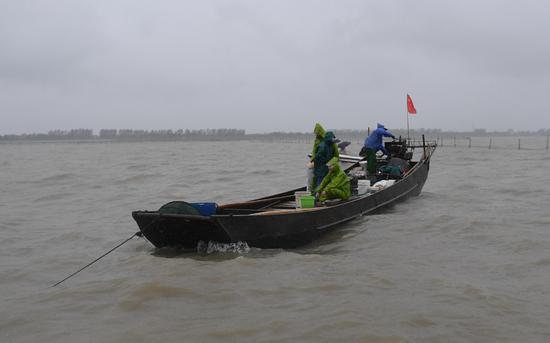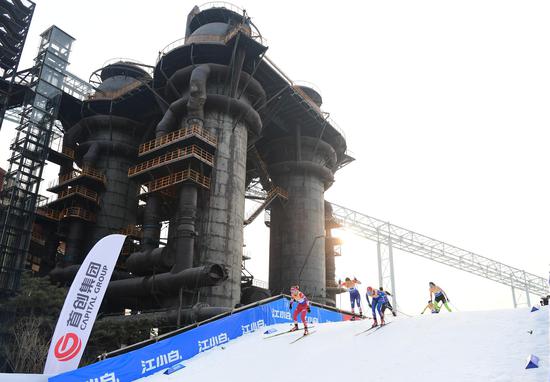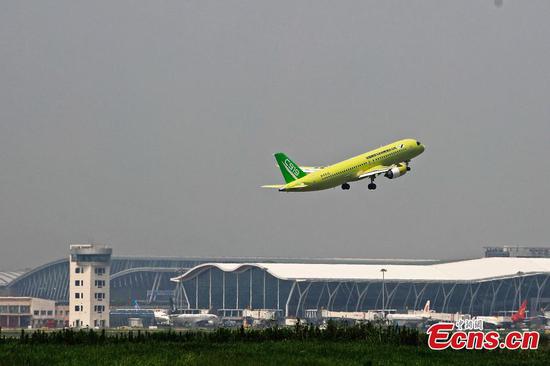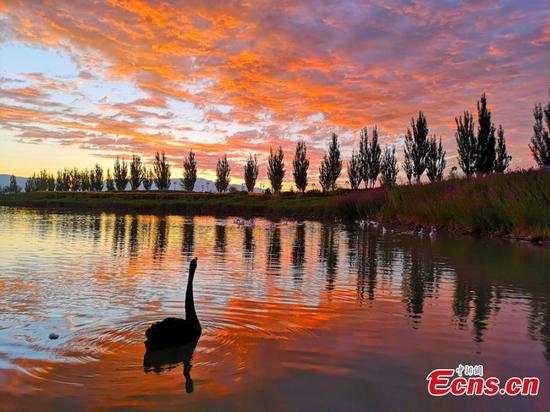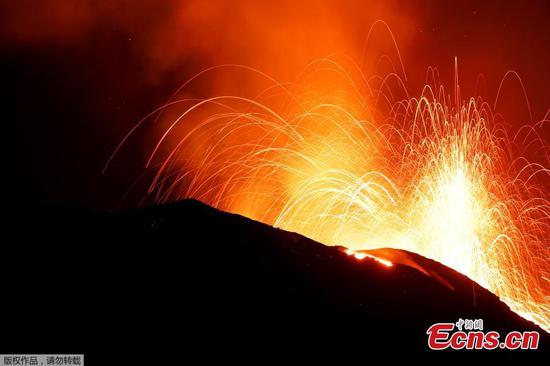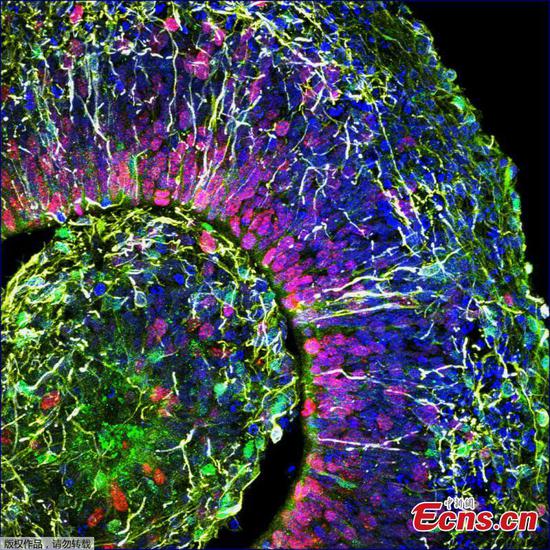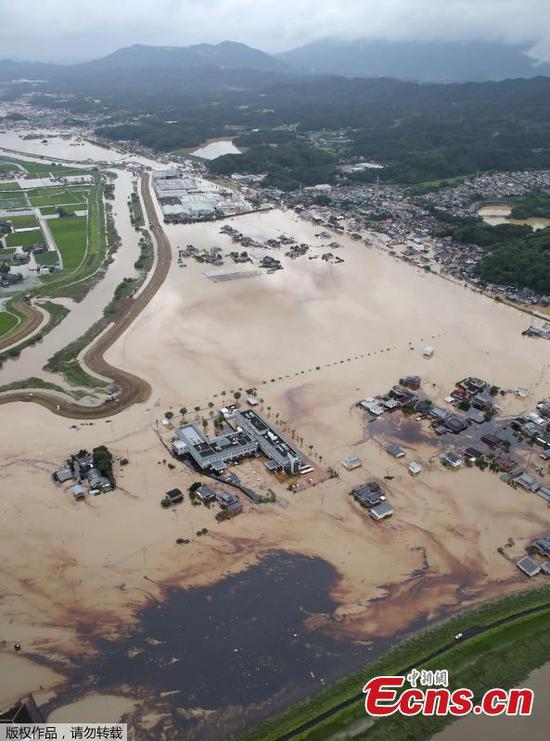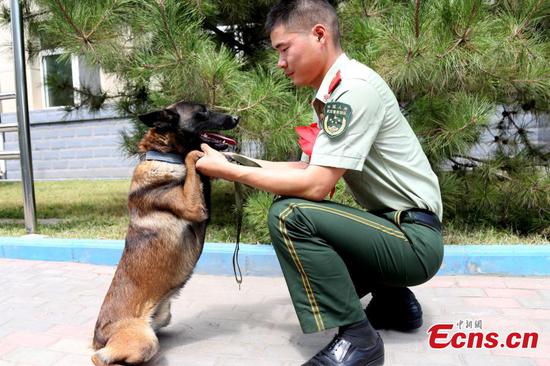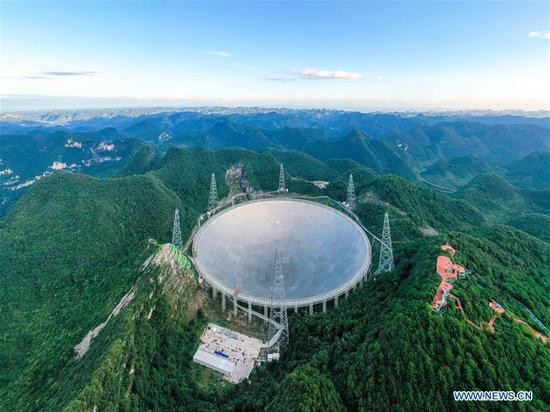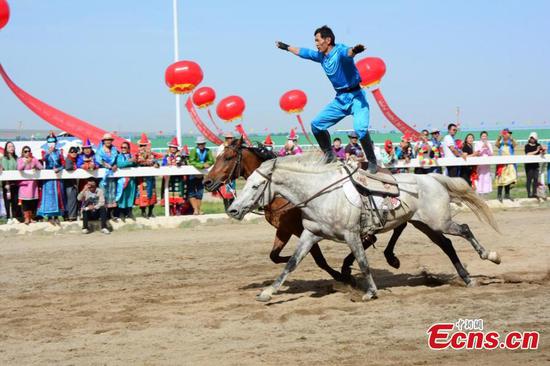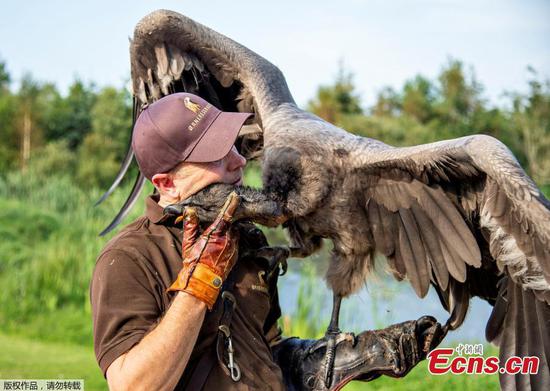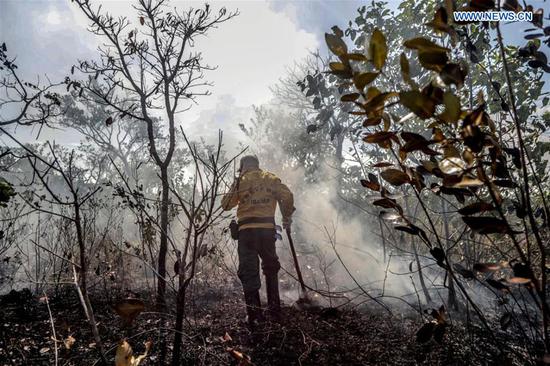
A snow leopard is captured by an infrared camera placed in the Sanjiangyuan National Natural Reserve in Qinghai province in January. (Photo/Xinhua)
The lush grass, crystal blue waters and creatures residing in the high altitude localities of Sanjiangyuan-home to the headwaters of the Yangtze, Yellow and Lancang rivers-continually inspire Wei Ye to come back.
"The view here is breathtaking," said Wei from Nanjing, more than 2,000 kilometers away.
A team of Hong Kong tourists are on an adventure to chase rare plateau animals. They have seen blue sheep, white-lipped deers and vultures, but their ultimate goal is to catch a glimpse of the snow leopard.
"Sanjiangyuan has the highest recorded density of snow leopards. Capturing them on camera is not a problem if you stay for a week," said Rinchen Dargye, a local guide.
The Sanjiangyuan area strictly curbs the number of visitors to protect the fragile natural beauty. A total of 22 households in the region are now allowed to host tourists after having received training. Each household can only receive three groups of visitors-usually ranging from one to three people-a year.
Snow leopards and other rare animals have been thriving in the area thanks to government efforts to protect the wild animals and crack down on poaching.
Li Yuhan saw seven snow leopards during her tour in October 2017, while Xiao Nan, a truck driver, was thrilled to encounter thousands of Tibetan antelopes crossing a bridge on the Qinghai-Tibet rail route last summer.
"The population of herbivores grew fast while carnivores were frequently sighted, which is strong evidence of the improved ecosystem in the Sanjiangyuan area," stated Zhao Xiang, director of the Sanjiangyuan project at the Beijing Shanshui Conservation Center.
The latest figures show that the area now boasts more than 1,000 snow leopards, and the number of rare antelopes has more than tripled. Meanwhile, naked carp, a species endemic to the plateau, has seen its numbers rise to 34 times its 2002 population.
"Such accomplishments are a result of increased awareness of ecological protection among local herders and the support of domestic and overseas experts," said Gyushe with the Sanjiangyuan National Park management bureau.
China has injected more than 18 billion yuan ($2.5 billion) in ecological conservation in the area since 2005. The Sanjiangyuan National Park, part of a pilot project of 10 national parks, is expected to be officially established in 2020.
British ecologist Terry Townshend applauded China's efforts. Sanjiangyuan is one of the cleanest areas in the world, with little human influence and many primitive features, Townshend said, adding that its natural environment provides an excellent shelter for wildlife.









